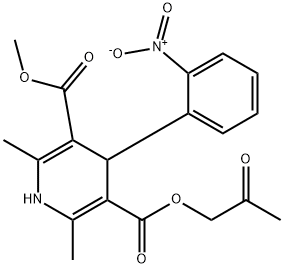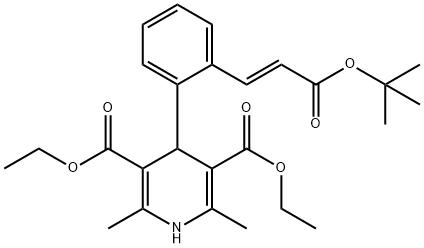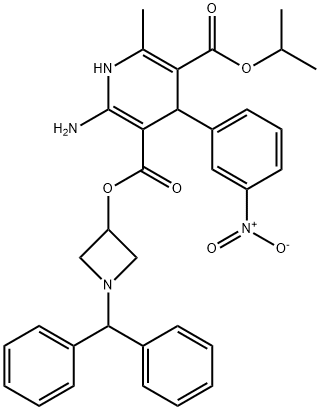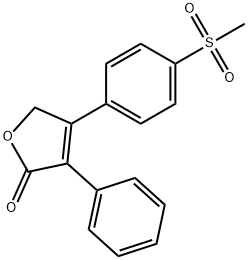Aranidipine , 95% , 86780-90-7
| Pack Size | Price | Stock | Quantity |
| 50mg | RMB575.20 | In Stock |
|
| 100mg | RMB977.60 | In Stock |
|
| 250mg | RMB1660.80 | In Stock |
|
| others | Enquire |
PRODUCT Properties
| Melting point: | 155° |
| Boiling point: | 530.0±50.0 °C(Predicted) |
| Density | 1.284±0.06 g/cm3(Predicted) |
| storage temp. | 2-8°C |
| solubility | DMSO : 125 mg/mL (321.86 mM) |
| form | Solid |
| pka | 2.56±0.70(Predicted) |
| color | Light yellow to yellow |
Description and Uses
Aranidipine was launched in Japan as an antihypertensive agent. Its pharmacological effects are similar to other dihydropyridine derivatives, e.g., nefidipine, however, it is more potent and longer lasting. This is partially due to the fact that its initial metabolite (ketone reduction) is just as effective as the parent compound. Aranidipine exerts its activity by blocking Ca+2 entry during depolarization via L-type voltagegated Ca channels. This causes decreased levels of intracellular Ca which leads to enhanced relaxation of smooth and cardiac muscle. It is a selective α2-adrenoreceptor antagonist which inhibits vasoconstrictive responses. As a dihydropyridine derivative, it can be synthesized via a modified Hantsch synthesis. While sold as a racemate, the (S)-enantiomer is 150 times more active than the (R)- antipode.
Safety
| Symbol(GHS) |  GHS07 |
| Signal word | Warning |
| Hazard statements | H302+H312+H332 |
| Precautionary statements | P261-P264-P270-P271-P280-P301+P312+P330-P302+P352+P312+P362+P364-P304+P340+P312-P501 |
| Toxicity | LD50 in male, female mice, rats (mg/kg): 143, 193, 1982, 1459 orally; LD50 in male, female mice (mg/kg): 7.3, 9.1 i.p. (Nakano) |






